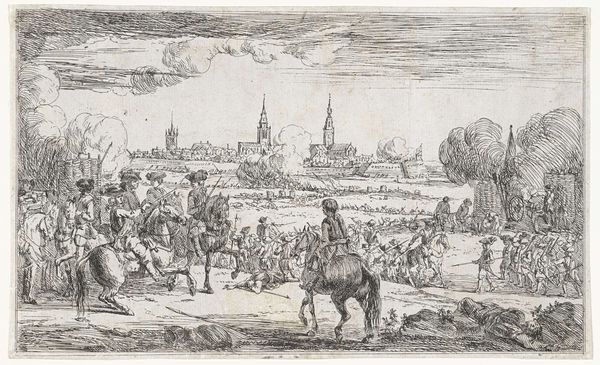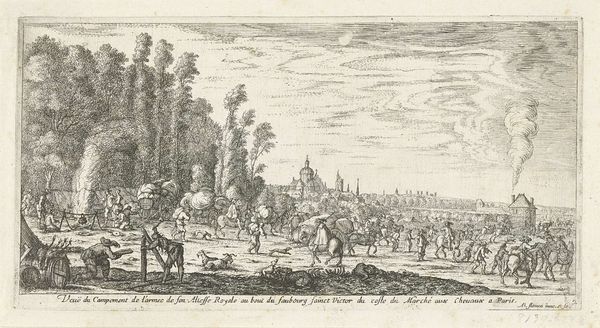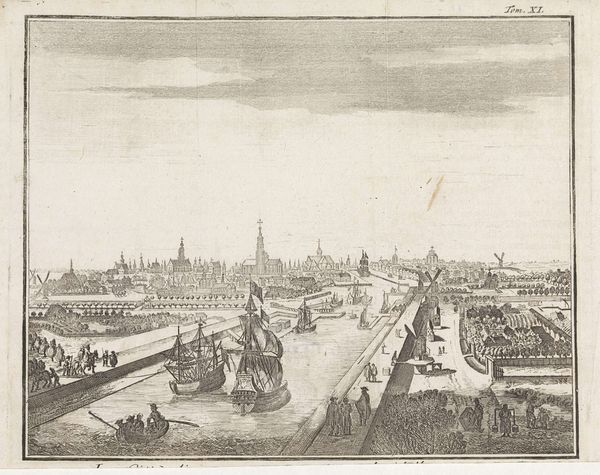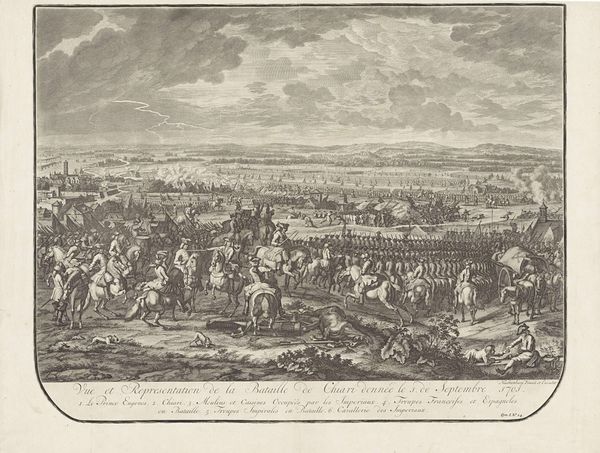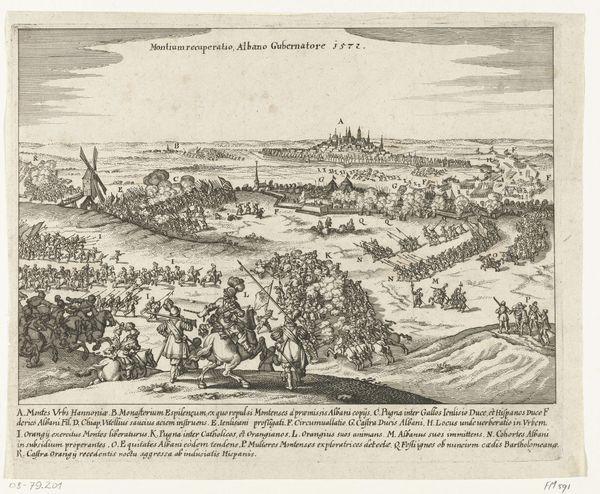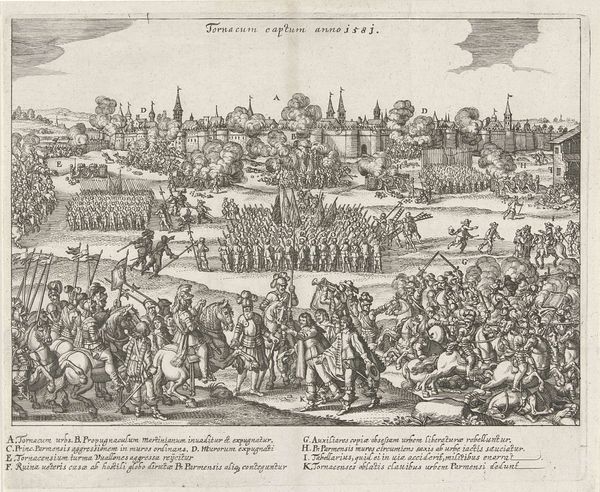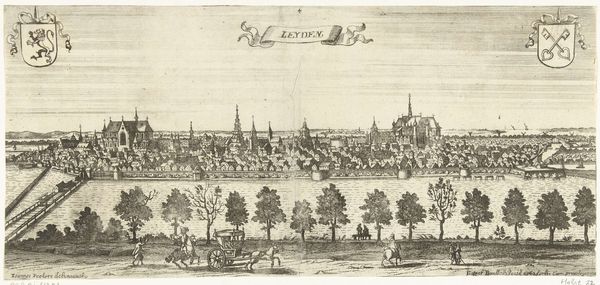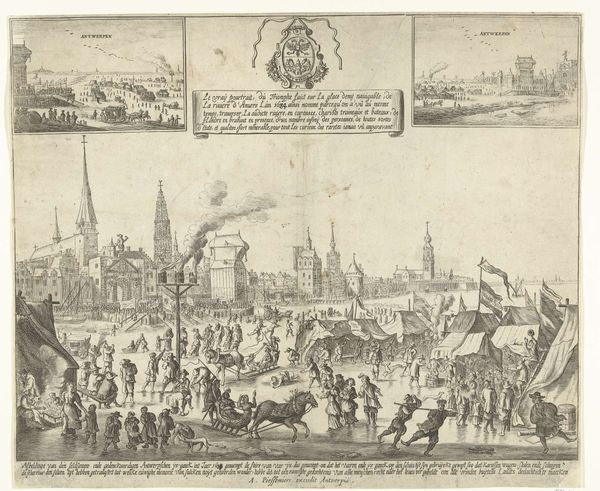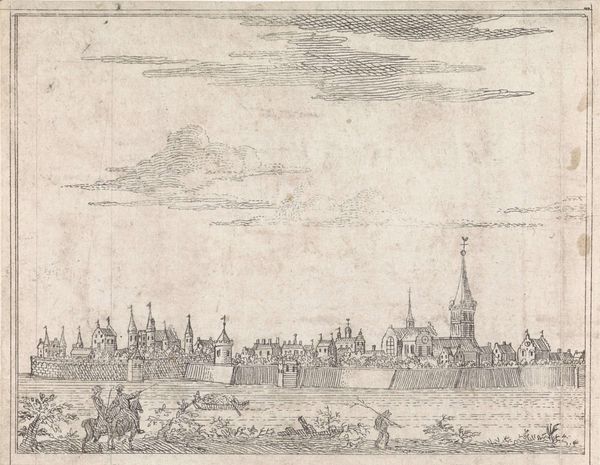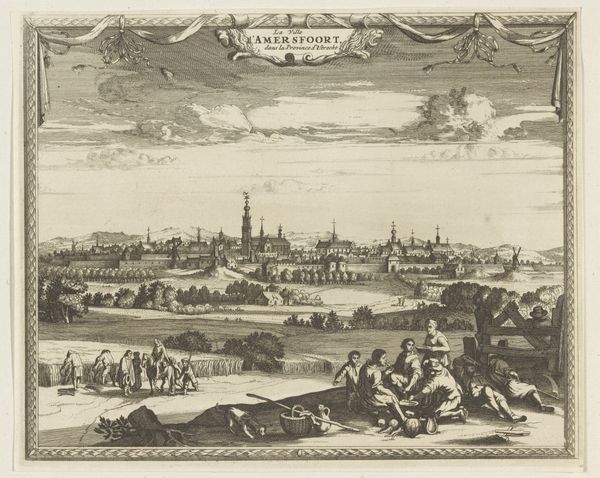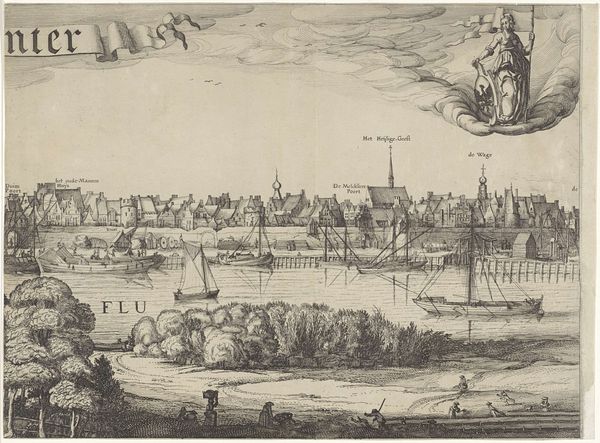
print, engraving
#
pen drawing
#
dutch-golden-age
# print
#
old engraving style
#
landscape
#
cityscape
#
engraving
Dimensions: height 195 mm, width 278 mm
Copyright: Rijks Museum: Open Domain
Curator: This engraving presents a bird's-eye view of Hamburg in 1668. Adriaen Oudendijck, the artist, really captures the industrious energy, don't you think? Editor: The meticulous line work, typical of Dutch Golden Age engravings, immediately evokes a sense of historical precision and detailed craftsmanship. Curator: Oudendijck has skillfully utilized engraving techniques to create varying tones and textures, but let's consider the physical effort involved, especially in replicating this image multiple times. Was Oudendijck a trained artist? Was this piece commissioned by the Hamburg city council? The process itself carries significant meaning here. Editor: Absolutely, and considering the context of 17th-century Hamburg, it's impossible to ignore the sociopolitical landscape. As a prominent port city within the Hanseatic League, Hamburg had established trade connections across Northern Europe. I wonder, who was this imagery catering to? Curator: Looking closely, the landscape is quite serene. In the foreground, figures on horseback, trees... what were these workers manufacturing? Where were these merchants trading? Who are the figures in the lower part, near to the woods? This piece presents an idealized scene of a bustling port, though the image flattens and silences the struggles of the working class within its city limits. Editor: Yes, the visual language is definitely curated, if I may, projecting power and prosperity in that era. But also let us consider who got to represent their own image on art. The wealthy aristocrats could own this print and admire the industrious work that they oversaw and profited from. I'd go so far as to say there is something incredibly unsettling in that. Curator: Agreed, it prompts critical questions about consumption, artistic representation, and the means by which historical narratives were constructed and perpetuated. In the end, there's so much to unpack in how art shapes and is shaped by socio-economic forces. Editor: Precisely, engaging with artwork this way encourages us to interrogate visual language and consider how we, as viewers, navigate inherited biases and power structures embedded within the history. It enriches our understanding of not only Hamburg in the 17th Century, but also its enduring relevance.
Comments
No comments
Be the first to comment and join the conversation on the ultimate creative platform.

